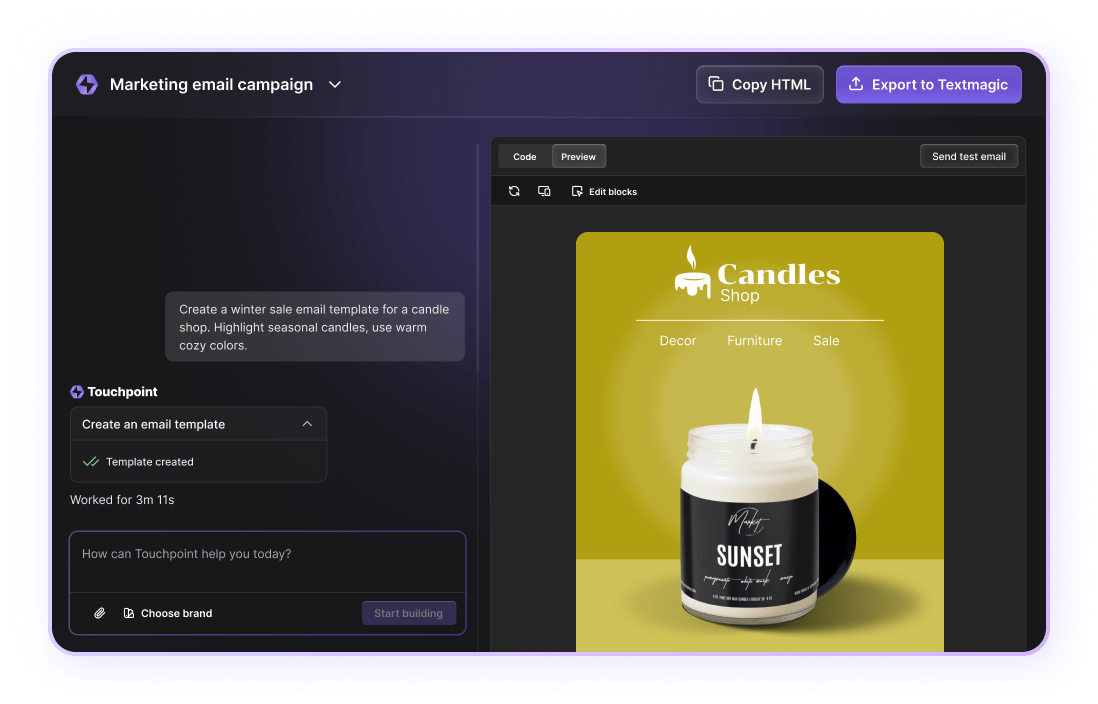How to Use the RRULE Generator
A recurrence rule, commonly referred to as an RRULE, defines the repeat pattern or rule for to-dos, journal entries and events. If specified, RRULE can be used to compute the recurrence set (the complete set of recurrence instances in a calendar component).
All of this may sound complicated. The good news is that we have created a free easy-to-use RRULE generator that will enable you to create recurrence rules automatically for your text messaging campaigns. With the RRULE generator, you can define recurrence rules according to parameters such as the day, week, month, year or a special event (e.g. a certain number of scheduled SMS sessions that have been sent).
Here’s how you can use the tool:
- Choose the repeat parameters from the drop-down options of the “Repeat” and “End” sections.
- As you continue to add rules, you will notice that the RRULE code changes automatically.
- Once you have finished, you will be presented with a code snippet that can be used in your code or API
Why you should use the RRULE generator
We consider that some RRULEs are too complicated to be displayed on a GUI and almost impossible to edit by inexperienced clients. Some sort of simplification was needed to improve interoperability between applications and to encourage people who don’t do RRULEs to implement them in their scheduling activities. With our easy-to-use RRULE generator, you can instantly define recurrence rules that respect the iCalendar RRULE format.
Why we built this tool
The iCalendar format can be used as an exchange format between systems and applications. Manually generating iCalendar recurrence rules can be extremely complicated, especially for the average user, and some scheduling and calendar tools that use RRULE for recurring events, while technically valid, can be extremely confusing (e.g. Google’s Calendar).
We created the Textmagic iCal RRULE generator to help our customers prepare RRULE strings that respect all the necessary formatting rules and are compatible with different APIs (including our own).
Benefits of using the RRULE generator
Here is a list of benefits associated with implementing the recurrence rule generator in your scheduling applications:
- Automatically create recurrence rules in a matter of seconds and use them to automate certain tasks, such as sending text messages at a predefined interval.
- Never miss an important event.
- Streamline communications with your staff and clients.
- Leverage special events to increase revenue.
- Automatically follow up with clients.
What is a recurrence rule?
An RRULE is used in calendars or applications for events and scheduling. Events tables generally have a column RRULE that treats a recurrence rule as a string value. A recurrence rule is made up of several components separated by semicolons.
The first element of every RRULE defines the frequency (FREQ) in intervals from years to seconds. All other elements of the RRULE string are optional. The INTERVAL specifies the time interval for the rule, COUNT specifies the number of occurrences and UNTIL=yyyymmdd specifies the end date. Other elements of an RRULE include BYDAY, BYMONTH and BYSETPOS.
Show me some common RRULE examples
The ins and outs of an RRULE are unnecessarily complex. Many types of rules will only be used on rare occasions, so you needn’t concern yourself with all the details. Here are some common RRULE examples:
- FREQ=MONTHLY; BYDAY=MO,TU,WE,TH,FR;BYSETPOS=1;UNTIL=20141129 – The event occurs on the first instance of each weekday (BYDAY in combination with BYSETPOS) in each month until the end of 2014 (UNTIL).
- FREQ=YEARLY;INTERVAL=3;BYMONTH=10;BYDAY=TU;BYMONTHDAY=2,3,4,5,6,7,8 – The event occurs every third year (INTERVAL) on the first Tuesday (BYDAY) after a Monday (BYMONTHDAY) in October.
- FREQ=MONTHLY; BYDAY=MO,TU,WE,TH,FR;BYSETPOS=1;UNTIL=20141129 – The event occurs on the first instance of each weekday (BYDAY in combination with BYSETPOS) in each month until the end of 2014 (UNTIL).
